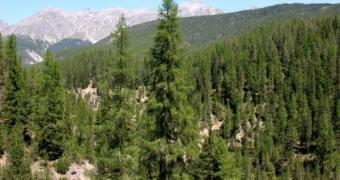Due to extensive periods of poor management, Canadian forests have recently crossed a very dangerous line, when they started emitting more carbon dioxide than they stored. The main culprits for this situation are the pine beetle, which is already responsible for decimating tens of thousands of square miles of trees thus far, as well as global warming and widespread fires, which were not kept in check at the time they started.
In addition, commercial logging, which is one of the country's most developed industries, also affects the capacity that the trees naturally have to store dangerous carbon dioxide gases.
Higher temperatures in its natural habitat force forest soil to dry out, thus making the trees especially vulnerable to fires, which often burn so hot that it takes firefighters days or even weeks to put them out. When ignited, trees release the carbon they have in store, emitting much more pollution than it would be expected from an object their size.
In the past, harsh Canadian winters used to keep insects in check, but, in recent years, milder and warmer summers meant that more pine beetles were able to reproduce over the next season, increasing the area they affected and causing massive dents in the trees' capacity to effectively store carbon dioxide underneath their bark. Environmentalists say that authorities now have to develop methods of getting rid of the insects, as they pose an increasing danger to remaining surfaces.
Scientists argue that the government should also introduce laws to regulate the amounts of woods that are being chopped off yearly, especially in the northern regions of the country, where the forests are most affected. This type of proposal has met heavy resistance from industry lobby groups and other scientists, who claim that, in the long run, such a measure will only increase the amounts of carbon that are being emitted worldwide.

 14 DAY TRIAL //
14 DAY TRIAL //